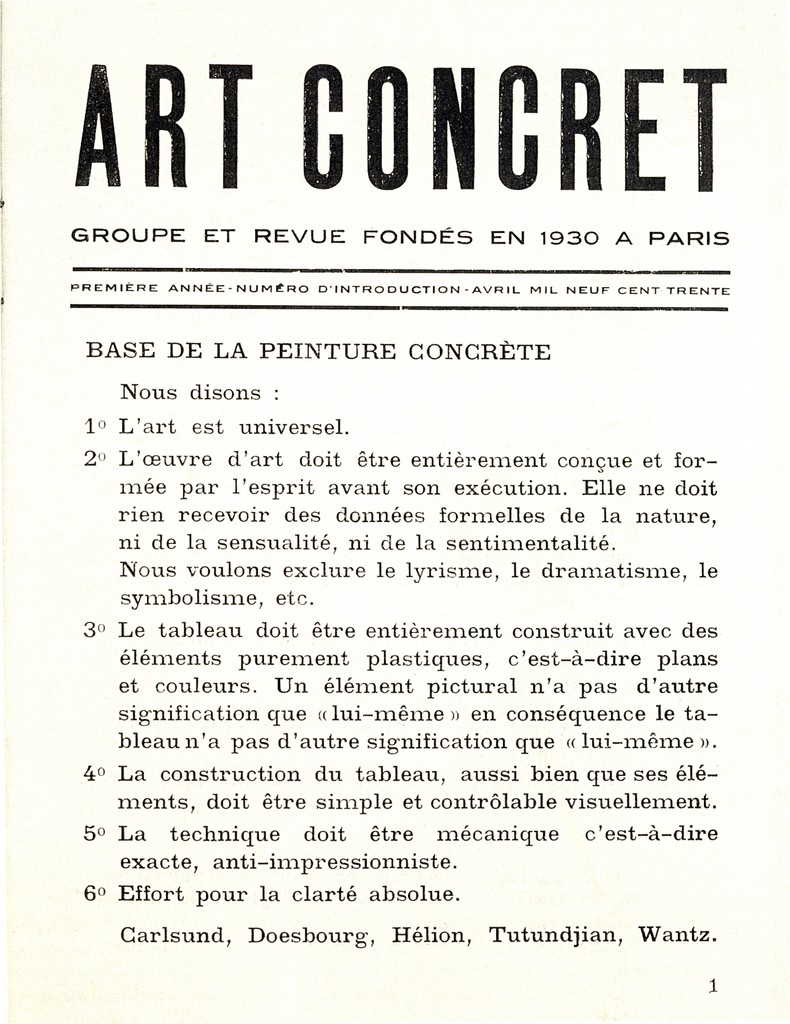Art Concrete
Concrete art was an art movement with a strong emphasis on geometrical abstraction. The term was first formulated by Theo van Doesburg and was then used by him in 1930 to define the difference between his vision of art and that of other abstract artists of the time. After his death in 1931, the term was further defined and popularized by Max Bill, who organized the first international exhibition in 1944 and went on to help promote the style in Latin America. The term was taken up widely after World War 2 and promoted through a number of international exhibitions and art movements.1
Translation
BASIS OF CONCRETE PAINTING
We say:
- Art is universal.
- A work of art must be entirely conceived and shaped by the mind before its execution. It shall not receive anything of nature’s or sensuality’s or sentimentality’s formal data. We want to exclude lyricism, drama, symbolism, and so on.
- The painting must be entirely built up with purely plastic elements, namely surfaces and colors. A pictorial element does not have any meaning beyond “itself”; as a consequence, a painting does not have any meaning other than “itself”.
- The construction of a painting, as well as that of its elements, must be simple and visually controllable. 5. The painting technique must be mechanic, i.e., exact, anti-impressionistic.
- An effort toward absolute clarity is mandatory.
Carlsund, Doesbourg, Helion, Tutundjian and Wantz.
